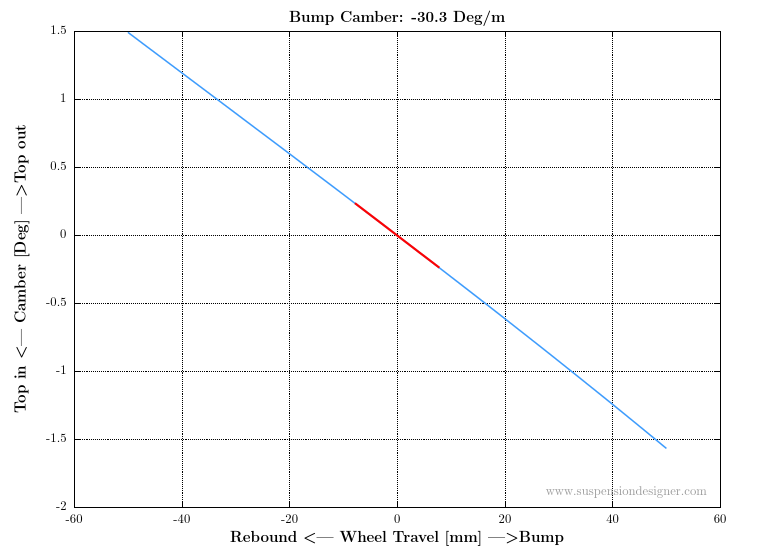Bump camber (or camber gain) is a measure of suspension camber change with wheel travel and is expressed in degrees of camber change per metre of suspension travel (Deg/m). Roll camber is calculated in the same way as bump camber except that the wheel travel is a result of body roll.
Following the sign convention for static camber (top of the tyre inboard of the tyre centre line is negative camber), bump camber is always negative as it is a measure of the additional negative camber a wheel gets as it moves into bump.
Adding bump camber to a suspension system helps to compensate for the loss in tyre camber to road when a vehicle rolls during cornering. Consider a vehicle with 0 Deg static camber and 0 Deg/m bump camber. If the vehicle body rolls 5 degrees during cornering, the tyre camber to road will be 5 degrees during cornering. A tyre will deliver its maximum cornering potential when it is perpendicular to the road (has 0 degrees of camber). Adding bump camber to the suspension geometry helps to compensate for the roll of the body during cornering and keeps the tyre closer to its optimal camber.
On typical production cars Macpherson strut suspensions can deliver up to ~15 Deg/m. Double wishbone suspension systems can deliver higher bump cambers, sometimes up to ~25 Deg/m on production cars.
In general terms, adding more bump camber to an axle will increase the cornering capacity of that axle. However, excessive bump camber may impact traction and braking performance due to body pitch and hence camber change during hard acceleration and braking.
The graph below shows a bump camber curve from a double wishbone suspension developed with RACE. The on-centre bump camber is high at -30.3 Deg/m which will contribute to good wheel camber control during cornering. The curve shows excellent linearity over the wheel travel range of interest contributing to linear vehicle behaviour with different levels of body roll. Note that the static camber offset has been removed from the curve.

—
